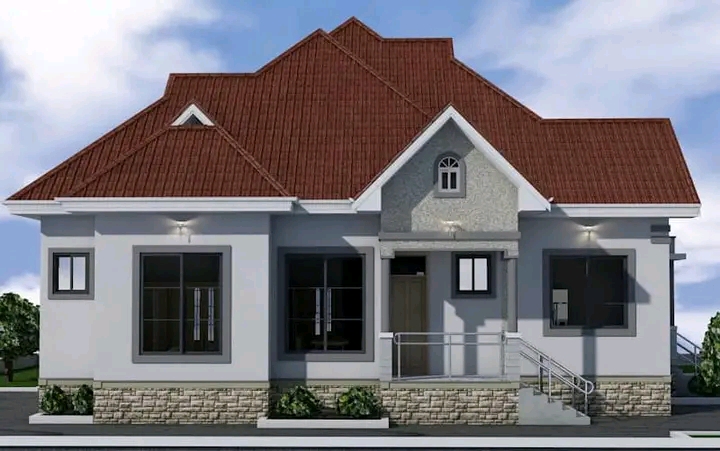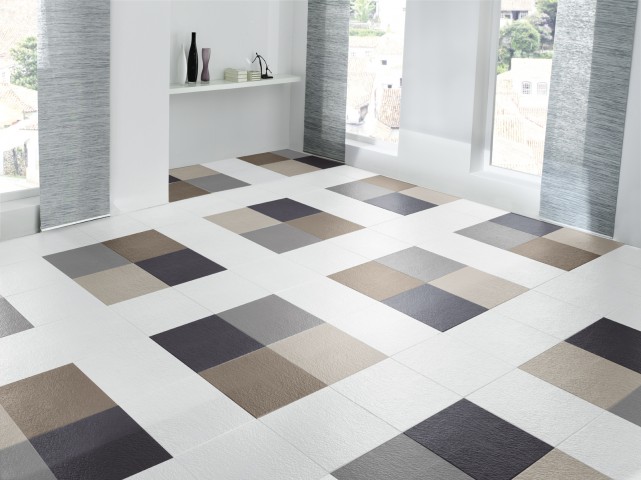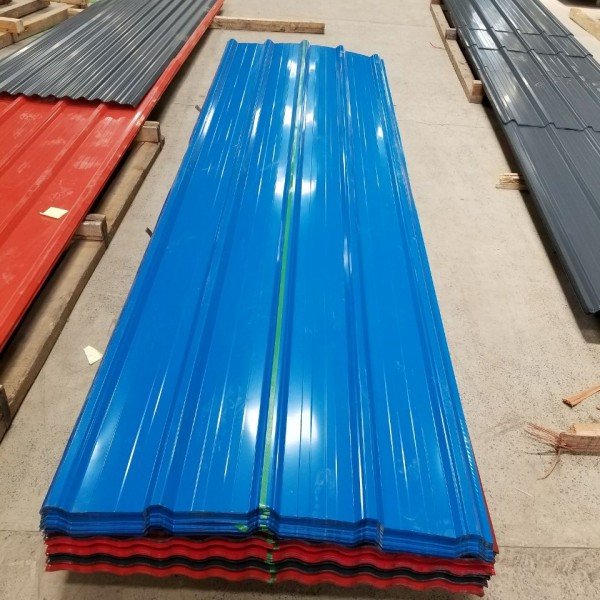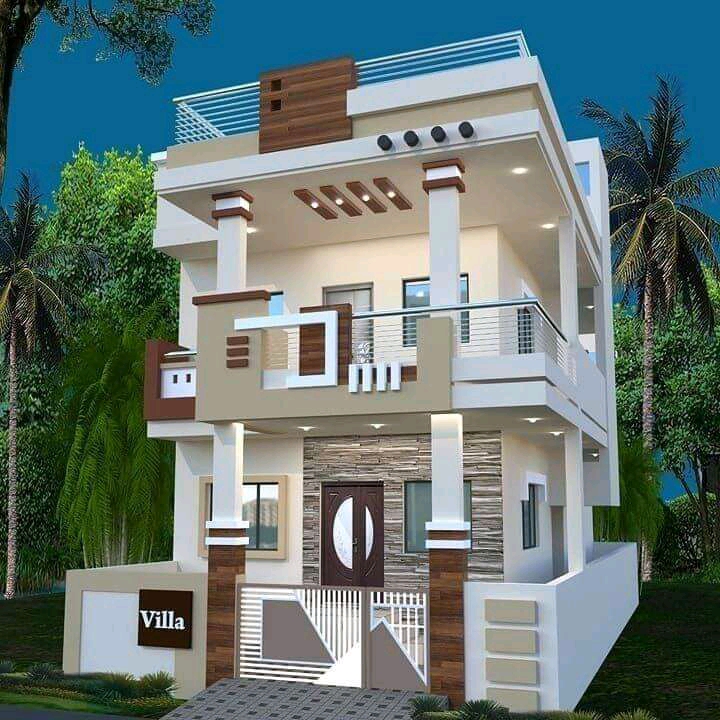Introduction:
Kenya, a nation marked by its rich cultural tapestry and economic dynamism, has witnessed a notable evolution in its housing market. As urbanization accelerates and lifestyles undergo transformations, the choices we make regarding our homes become increasingly pivotal. This article digs into the housing landscape of Kenya, emphasizing the importance of thoughtful house design, with a specific focus on the burgeoning trend of 4-bedroom house designs in Kenya.
A. Brief Overview of the Housing Market in Kenya:
In recent years, Kenya has experienced rapid urbanization, with a growing population seeking homes that align with modern living standards. The housing market has responded to this demand, witnessing a shift from traditional housing structures to more contemporary designs. As the country’s infrastructure develops, so does the diversity of available housing options, catering to a broad spectrum of preferences and needs.
B. Importance of Thoughtful House Design:
The significance of thoughtful house design extends beyond mere aesthetics; it plays a pivotal role in enhancing the quality of life for homeowners. Well-designed homes are not just structures; they are dynamic spaces that accommodate evolving lifestyles, promote sustainability, and contribute to the overall well-being of the occupants. From efficient space utilization to the incorporation of eco-friendly features, thoughtful design is a cornerstone of a harmonious living environment.
C. Thesis Statement: Exploring the Significance of 4-Bedroom House Designs in Kenya:
At the heart of the evolving housing market in Kenya lies a compelling trend — the rise of 4-bedroom house designs. This article aims to dissect the factors contributing to the increasing popularity of these designs and to shed light on their significance in the Kenyan context. Beyond mere square footage, a 4-bedroom house symbolizes adaptability, sustainability, and a response to the changing dynamics of family life in Kenya.
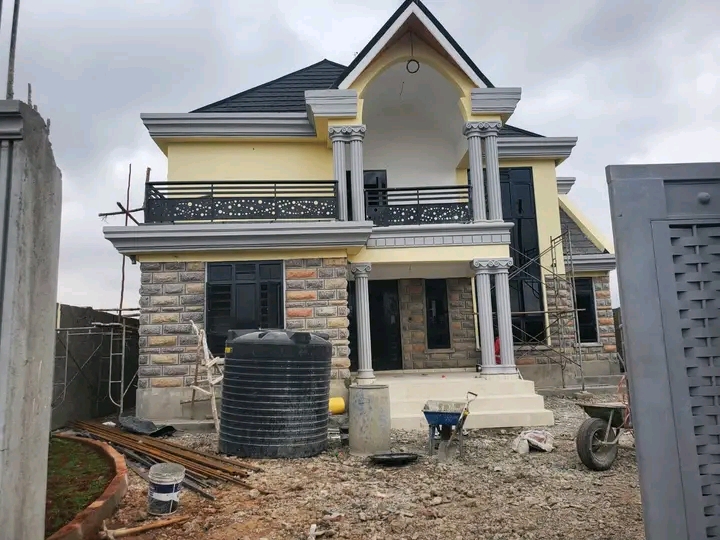
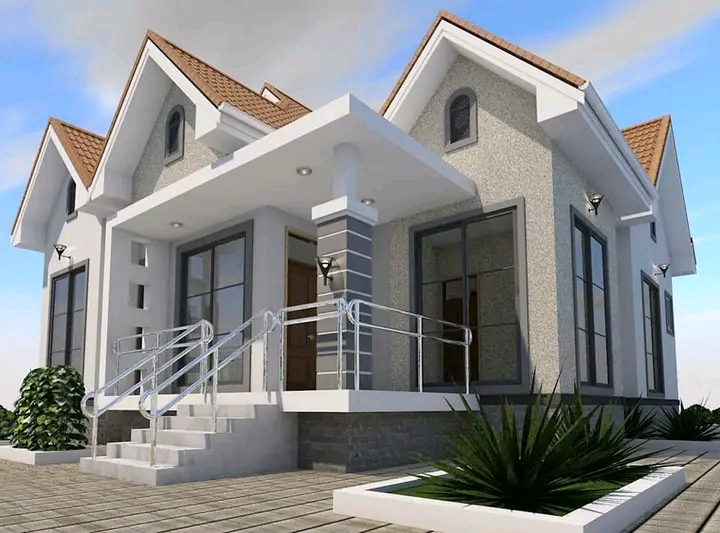
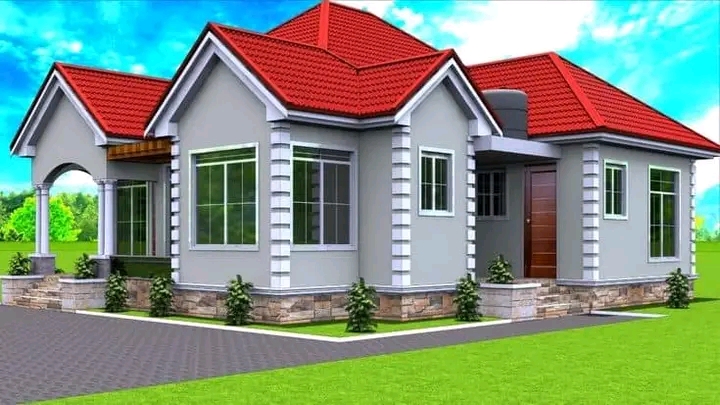
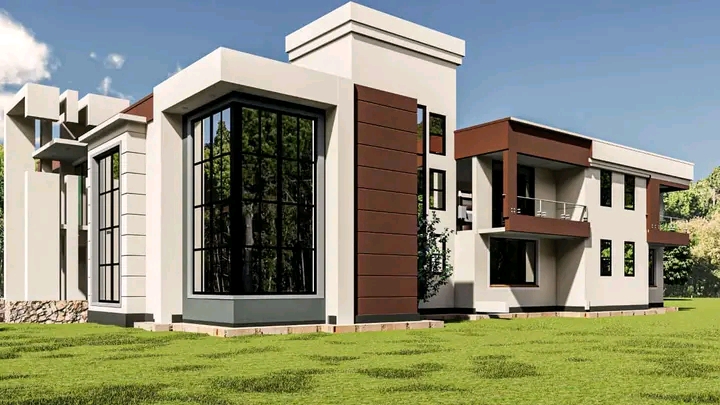
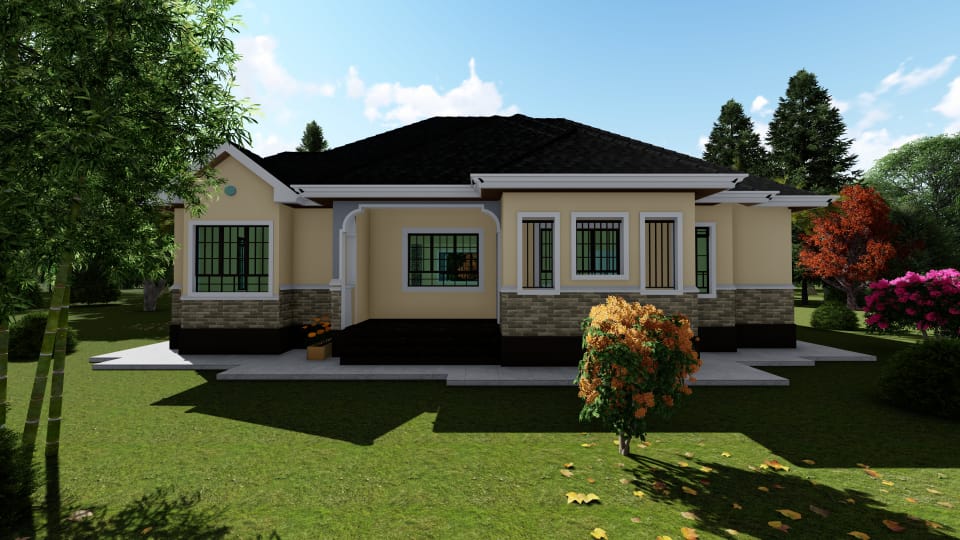
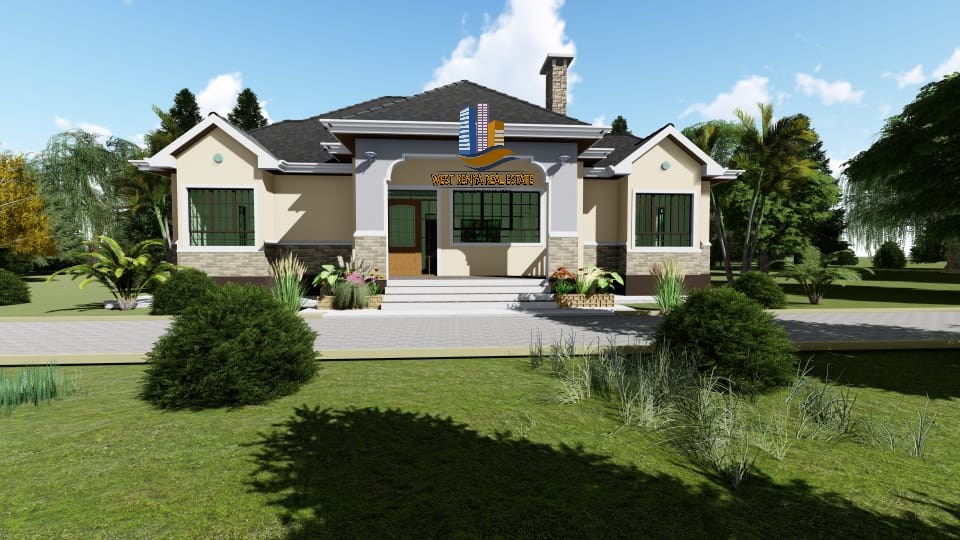

In the subsequent sections, we will delve into the demand for spacious living, analyze the role of family dynamics in shaping house designs, and explore economic considerations that make 4-bedroom homes a prudent investment. Additionally, we will examine how these designs align with social trends, serve as status symbols, and allow for customization to suit individual preferences. Case studies of successful 4-bedroom house designs in Kenya will provide concrete examples, while we also address challenges and propose innovative solutions.
Related post: Why the Design and Build Concept is Ideal for Private Developers
Related Post: AFFORDABLE AVERAGE COST OF BUILDING A 3 BEDROOM HOUSE IN 2023.
Join us on a journey through the homes that define modern living in Kenya, as we unravel the layers of significance behind the 4-bedroom house design trend.
II. Demand for Spacious Living:
A. Growing Trend Towards Larger Homes:
In the ever-evolving landscape of housing preferences, there is a discernible shift towards larger homes, reflecting a collective desire for more space. This trend is not just a mere pursuit of square footage; rather, it encapsulates a holistic approach to living that values comfort, flexibility, and the freedom to create multifunctional spaces within the confines of one’s residence. In Kenya, this trend is manifesting in the increasing popularity of 4-bedroom house designs.
B. Lifestyle Changes and Increased Need for Space:
The dynamics of contemporary lifestyles are marked by a series of changes that have reshaped the way individuals and families interact within their homes. Remote work, a growing focus on well-being, and the need for designated spaces for various activities have all contributed to an increased demand for spacious living. The traditional concept of a home as a place for shelter has expanded to encompass a dynamic environment that adapts to the multifaceted nature of modern life.
House Plans in Kenya Per Categories
Flat Roof House Designs
Five Bedrooms House Plans
Church House Plans
Bungalow House Plans
Bedsitters
Apartment House Plans
Three Bedrooms House Plans
Rental
One Bedroom House Plans
Maisonette House Plans
Four Bedrooms House Plans
In this context, the 4-bedroom house emerges as a solution that not only addresses the need for personal space but also allows for the creation of dedicated areas for work, recreation, and communal activities. The versatility of such homes aligns with the evolving needs of residents, making them an attractive choice for those seeking a residence that caters to both present and future requirements.
C. Cultural Considerations in Kenya Favoring Spacious Living Arrangements:
Kenya, with its diverse cultural tapestry, has deep-rooted values that often find expression in the design and layout of homes. The importance of communal living and the central role of the family in Kenyan culture underscore the preference for spacious residences. Extended family setups and the significance placed on communal gatherings have a direct influence on the demand for homes that offer ample space for social interactions.
In many Kenyan households, the idea of shared spaces goes beyond immediate family members, encompassing extended family and close-knit communities. As a result, the 4-bedroom house design aligns with these cultural considerations, providing the necessary space to accommodate the various aspects of communal living while ensuring individual privacy and comfort.
In the subsequent sections of this exploration, we will delve deeper into the specific aspects that make 4-bedroom house designs well-suited to the changing dynamics of family life in Kenya. From functional considerations to the economic advantages of spacious living, the significance of these designs becomes increasingly apparent in the context of the Kenyan housing market.
Related Post: How much does it cost to build a 5 bedroom house in Kenya
III. Family Dynamics and Functional Spaces:
A. Catering to Diverse Family Sizes:
One of the pivotal aspects driving the demand for 4-bedroom house designs in Kenya is their inherent flexibility in accommodating diverse family sizes. In a nation characterized by a rich mosaic of family structures, from nuclear families to extended setups, the need for homes that can seamlessly adapt to different configurations is paramount. The 4-bedroom layout provides a balanced solution, offering enough space for larger families while not overwhelming smaller households.
This adaptability is particularly crucial in a cultural context where family dynamics may evolve over time. Whether it’s a couple starting a family, multi-generational living, or the inclusion of relatives, the 4-bedroom house design provides a canvas that can be tailored to the unique requirements of each family, ensuring that the home remains a comfortable and cohesive living space.
B. Importance of Individual Bedrooms for Privacy:
Individual privacy within a shared living space is a cornerstone of modern family living. The significance of personal space cannot be overstated, especially as family members pursue diverse routines, work schedules, and leisure activities. The 4-bedroom house design, with its allocation of individual bedrooms, addresses this need for privacy, allowing each member of the household to have a personal retreat within the larger communal space.
Related Post: simple 3 bedroom house plans in Kenya solutions
This emphasis on individual bedrooms not only contributes to harmonious family living but also aligns with cultural norms that value personal autonomy. It fosters an environment where residents can personalize their living spaces, fostering a sense of ownership and comfort within the family unit.
C. Multi-functional Spaces to Accommodate Various Family Activities:
Modern family life is characterized by a myriad of activities that demand flexible living spaces. From remote work and e-learning to recreational pursuits, having areas that can seamlessly transition between different functions is key. The 4-bedroom house design excels in creating multi-functional spaces that cater to the diverse needs of a household.
Living rooms can transform into home offices during the day and entertainment hubs in the evening. Dining areas can serve as collaborative spaces for family discussions or children’s study sessions. This adaptability not only enhances the overall functionality of the home but also aligns with the changing dynamics of how families engage with their living spaces in the digital age.
In the subsequent sections, we will further explore the economic considerations that make 4-bedroom house designs an astute investment, as well as delve into the social trends and status implications associated with these spacious and adaptable living arrangements in the Kenyan context.
Related Post: How much does it cost to build a 4-bedroom house in Kenya
IV. Economic Considerations:
A. Long-Term Investment in Property:
Investing in a home is not just a short-term decision; it’s a commitment to long-term financial stability. The 4-bedroom house design in Kenya aligns with the principle of long-term investment in property. As families grow and evolve, the adaptability of a 4-bedroom home ensures that it remains a viable and comfortable residence throughout various life stages.
In the context of real estate appreciation, the long-term value of a well-designed and appropriately sized property becomes evident. The 4-bedroom house caters to a wide demographic, making it an appealing choice for a diverse range of potential buyers, enhancing its desirability and contributing to its enduring value as a real estate asset.
B. Resale Value and Market Demand for 4-Bedroom Homes:
The resale value of a property is intricately tied to its market demand, and in Kenya, the demand for 4-bedroom homes has been steadily on the rise. As families seek larger, more adaptable living spaces, the 4-bedroom house design stands out as a market-responsive choice. When homeowners decide to sell, the property’s appeal to a broad spectrum of potential buyers ensures a robust resale market.
This sustained demand can be attributed to the design’s flexibility, catering to both growing families and those seeking a comfortable, spacious living environment. The market dynamics favoring 4-bedroom homes position them as sound investments, providing homeowners with confidence in the resale potential of their property.
C. Cost-Efficiency in the Long Run Compared to Frequent Relocations or Expansions:
While the initial cost of constructing or purchasing a 4-bedroom house might seem substantial, it is essential to view this investment through the lens of long-term cost-efficiency. The adaptability of these homes means that families can grow within the same space, eliminating the need for frequent relocations or costly expansions.
Compared to the expenses associated with moving to a larger home or undertaking extensive renovations to accommodate changing needs, the 4-bedroom house emerges as a cost-effective solution. Its versatility to meet the evolving requirements of a family over time reduces the financial strain associated with constantly adapting to new living spaces.
In the subsequent sections, we will explore the social trends associated with residing in a 4-bedroom house in Kenya, examining how these homes contribute to the perception of success and stability within the community. Additionally, we will delve into the customization and sustainability aspects that further enhance the value proposition of 4-bedroom house designs in the Kenyan housing market.
V. Social Trends and Status Symbol:
A. Social Implications of Living in a 4-Bedroom House:
The choice of housing goes beyond the physical structure; it often carries social implications that resonate within communities. In Kenya, residing in a 4-bedroom house is not merely a matter of square footage; it reflects a conscious decision towards a certain lifestyle. The social implications of living in a spacious and well-designed home extend to how individuals and families are perceived within their social circles.
The 4-bedroom house, with its generous living spaces and multiple bedrooms, signifies a commitment to a certain level of comfort and quality of life. It becomes a symbol of a deliberate choice to prioritize space, privacy, and adaptability in one’s living environment. This choice often resonates with broader societal trends and expectations, contributing to the narrative of a family’s values and aspirations.
B. Perception of Success and Stability:
In many societies, including Kenya, the size and design of one’s home are often linked to notions of success and stability. A 4-bedroom house, with its connotations of affluence and thoughtful design, becomes a tangible representation of achieving certain milestones in life. It reflects not only financial success but also stability in terms of family planning and long-term commitments.
The perception of success and stability associated with living in a 4-bedroom house is deeply ingrained in societal norms. It aligns with the idea that a well-constructed and spacious home is a testament to the achievements and aspirations of its residents. This perception influences how individuals are regarded within their communities, contributing to a sense of pride and accomplishment.
C. Influence on Social Status within the Community:
In close-knit communities, the type of home one inhabits can significantly influence social status. The 4-bedroom house, being a symbol of prosperity and thoughtful living, carries a certain prestige within Kenyan communities. Residents of such homes are often perceived as having achieved a level of success and social standing that aligns with societal expectations.
The influence on social status within the community extends beyond personal perceptions; it can impact relationships, social interactions, and even opportunities within the community. The 4-bedroom house, as a status symbol, becomes a focal point for community dynamics, shaping how individuals and families are positioned within the social fabric.
In the subsequent sections, we will explore the customization and personalization opportunities afforded by 4-bedroom house designs in Kenya. We will also delve into the sustainability aspects of these homes, examining how they contribute to environmental consciousness and long-term well-being.
VI. Customization and Personalization:
A. Flexibility in Design to Suit Individual Preferences:
One of the standout features of 4-bedroom house designs in Kenya is their inherent flexibility, providing homeowners with a canvas to tailor their living space to individual preferences. From the architectural layout to interior design elements, the adaptability of these homes allows residents to imprint their unique style on their living environment.
Individual preferences regarding room functionalities, color schemes, and overall aesthetics can be seamlessly incorporated into the design. Whether it’s creating a cozy reading nook, a vibrant entertainment area, or a home office with a view, the 4-bedroom layout offers the versatility needed to cater to diverse tastes. This flexibility fosters a sense of ownership and connection to the living space, transforming a house into a personalized home.
B. Opportunities for Creative Expression and Functional Customization:
Beyond mere aesthetics, the 4-bedroom house design opens doors for creative expression and functional customization. Homeowners have the opportunity to infuse their personality into the architectural elements and interior design, creating a space that resonates with their lifestyle and values.
Creative use of space, innovative storage solutions, and the integration of personalized elements contribute to a home that is not only functional but also a reflection of the occupants’ identity. Whether it’s incorporating sustainable materials, embracing local craftsmanship, or showcasing personal art collections, the 4-bedroom house becomes a medium for creative expression and individuality.
C. Tailoring a Home to Meet Specific Needs of the Occupants:
Every family is unique, with distinct needs and lifestyle preferences. The 4-bedroom house design excels in its ability to accommodate these specific requirements, offering a platform for tailoring a home to meet the occupants’ needs. From dedicated spaces for hobbies and activities to considerations for future family growth, the design allows for thoughtful customization.
This tailoring extends to practical aspects such as energy efficiency, accessibility, and technological integration. The ability to align the home with the specific needs of the occupants contributes to a living environment that not only meets immediate requirements but also evolves with the family over time.
In the upcoming sections, we will delve into case studies of successful 4-bedroom house designs in Kenya, examining the elements that contribute to their success. Additionally, we will explore the challenges associated with these designs and propose innovative solutions to address common issues.
VII. Sustainability and Environmental Considerations:
A. Efficient Use of Space to Minimize Environmental Impact:
In an era marked by increasing environmental awareness, the 4-bedroom house design in Kenya aligns with the principles of sustainability through its efficient use of space. Rather than relying on expansive footprints, these homes prioritize thoughtful layouts that optimize square footage. This efficiency not only minimizes the environmental footprint of each residence but also contributes to a more sustainable urban development model.
By emphasizing functionality and avoiding unnecessary sprawl, 4-bedroom house designs play a role in preserving green spaces, reducing energy consumption, and promoting a more eco-conscious approach to residential living. The efficient use of space is a cornerstone of sustainable architecture, aligning with global efforts to create more environmentally friendly housing solutions.
B. Integration of Eco-Friendly Features in 4-Bedroom House Designs:
Sustainability goes beyond efficient space utilization—it extends to the integration of eco-friendly features within the design and construction of 4-bedroom homes. From the selection of building materials to the incorporation of energy-efficient systems, these designs prioritize environmental responsibility.
Solar panels, rainwater harvesting systems, and energy-efficient appliances are common features integrated into 4-bedroom house designs in Kenya. These features not only reduce the environmental impact of the home but also contribute to long-term cost savings for the homeowners. The conscious choice of eco-friendly features reflects a commitment to both environmental stewardship and the well-being of future generations.
C. Long-Term Sustainability Benefits of Well-Designed Homes:
Well-designed 4-bedroom homes offer long-term sustainability benefits that extend beyond their initial construction. The adaptability of these homes ensures that they remain functional and relevant over time, reducing the need for extensive renovations or reconstructions that can contribute to waste and resource depletion.
Furthermore, the efficient use of space and integration of sustainable features contribute to a lower carbon footprint throughout the lifecycle of the home. This holistic approach to sustainability aligns with the growing global consciousness regarding climate change and resource conservation. Choosing a well-designed 4-bedroom house becomes not just a lifestyle choice but also a commitment to a sustainable and environmentally responsible future.
In the final sections of this exploration, we will showcase case studies of successful 4-bedroom house designs in Kenya, providing concrete examples of how these principles are applied in practice. Additionally, we will address the challenges associated with designing and building such homes and propose innovative solutions to ensure a harmonious balance between functionality, aesthetics, and sustainability.
VIII. Case Studies: Successful 4-Bedroom House Designs in Kenya
A. Showcase of Notable Projects in Kenya:
- The Green Haven Residence, Nairobi:
- Architecturally designed for sustainability, featuring solar panels and rainwater harvesting.
- Thoughtful landscaping that maximizes natural shading and ventilation.
- Integration of smart home technology for energy efficiency.
- The Coastal Retreat, Mombasa:
- Emphasis on open spaces and cross-ventilation to harness the coastal breeze.
- Utilization of local, eco-friendly materials in construction.
- Innovative rainwater collection system for sustainable water usage.
- The Serene Oasis, Eldoret:
- Designed with a focus on multi-functional spaces to cater to diverse family needs.Inclusion of a home garden to promote self-sustainability.
- Integration of traditional Kenyan design elements for cultural resonance.
B. Analysis of Design Elements Contributing to Success:
- Thoughtful Space Planning:
- Successful designs prioritize efficient use of space, ensuring that each area serves a purpose.
- Open layouts and strategic placement of rooms contribute to a seamless flow.
- Integration of Local Elements:
- Incorporating locally sourced materials and design elements adds cultural authenticity.
- Harnessing natural elements like sunlight and wind aligns with local climate conditions.
- Sustainable Features:
- Integration of solar panels, rainwater harvesting, and energy-efficient appliances.
- Emphasis on eco-friendly construction practices and materials.
- Adaptability and Flexibility:
- Designs that can adapt to changing family needs over time.
- Multi-functional spaces that cater to various activities and lifestyles.
C. Testimonials from Homeowners:
- Jane N., Nairobi:
- “Choosing a 4-bedroom house wasn’t just about space; it was about creating a home for our family. The design allows us to grow without outgrowing our space.”
- Samuel K., Mombasa:
- “Living in a house that considers the environment is fulfilling. Our home not only meets our family’s needs but also aligns with our commitment to sustainability.”
- Grace W., Eldoret:
- “The integration of local design elements makes our home uniquely Kenyan. It’s more than a house; it’s a reflection of our culture and identity.”
These case studies exemplify the success of 4-bedroom house designs in Kenya, showcasing how thoughtful planning, sustainability, and adaptability contribute to homes that resonate with the diverse needs and values of Kenyan families.
In the upcoming sections, we will explore the challenges associated with designing and building 4-bedroom homes in Kenya and propose innovative solutions to ensure that these homes continue to meet the evolving expectations of homeowners in the dynamic Kenyan housing market.
IX. Challenges and Solutions:
A. Potential Challenges in Designing and Building 4-Bedroom Houses:
- Cost Constraints:
- Constructing larger homes may face budgetary constraints.
- Balancing affordability with the desire for spacious designs can be challenging.
- Space Optimization:
- Maximizing space efficiency without compromising comfort and aesthetics.
- Ensuring that the design meets the diverse needs of a family without creating wasted or underutilized spaces.
- Sustainability Integration:
- Incorporating eco-friendly features within budget constraints.
- Balancing sustainability goals with the need for cost-effective construction materials.
- Local Regulation Compliance:
- Navigating local building codes and regulations can be complex.
- Ensuring that designs adhere to legal requirements without compromising on the vision for the home.
B. Innovative Solutions to Address Common Issues:
- Cost-Efficient Design Practices:
- Implementing modular construction methods for cost savings.
- Utilizing locally sourced and sustainable materials to reduce costs.
- Smart Space Planning:
- Employing innovative architectural solutions for efficient use of space.
- Incorporating multi-functional furniture and storage solutions.
- Innovative Sustainable Technologies:
- Exploring innovative and cost-effective renewable energy solutions.
- Collaborating with suppliers offering sustainable construction materials at competitive prices.
- Collaborative Design Workshops:
- Organizing collaborative workshops involving architects, builders, and potential homeowners.
- Facilitating open discussions to address concerns and find creative solutions collectively.
C. Collaborative Efforts Between Architects, Builders, and Homeowners:
- Integrated Design Process:
- Establishing a collaborative approach from the project’s inception.
- Involving architects, builders, and homeowners in joint planning sessions to align expectations and capabilities.
- Regular Communication Channels:
- Creating open lines of communication between all stakeholders.
- Regular progress updates, feedback sessions, and addressing concerns promptly.
- Education and Empowerment:
- Educating homeowners about sustainable practices and cost implications.
- Empowering homeowners to actively participate in the design process to ensure the final product aligns with their vision.
- Adaptability in Design:
- Ensuring that the design is adaptable to future changes in family dynamics.
- Offering modular design elements that can be adjusted or expanded upon as needed.
By addressing potential challenges through innovative solutions and fostering collaborative efforts, architects, builders, and homeowners can collectively contribute to the success of 4-bedroom house designs in Kenya. The ability to navigate challenges and find sustainable, cost-effective solutions ensures that these homes not only meet the immediate needs of residents but also stand the test of time in the dynamic and evolving housing landscape.
X. Conclusion:
A. Recap of the Importance of 4-Bedroom House Designs in Kenya:
In conclusion, the exploration of 4-bedroom house designs in Kenya has highlighted their significance in the evolving housing landscape. These homes cater to the growing demand for spacious, adaptable living spaces that align with modern lifestyles. From accommodating diverse family sizes to integrating sustainable features, the 4-bedroom house design serves as a versatile solution that resonates with the unique cultural, social, and economic dynamics of Kenya.
B. Encouragement for Prospective Homeowners to Consider Thoughtful Design:
For prospective homeowners in Kenya, the journey towards acquiring a residence is not merely a transaction; it is a thoughtful investment in a space that will shape the experiences and memories of family life. The emphasis on thoughtful design, as exemplified by the 4-bedroom house, encourages individuals and families to consider not just the immediate needs but also the long-term implications of their housing choices.
Choosing a 4-bedroom house is an invitation to engage in the design process actively, tailoring the living space to meet individual preferences, cultural values, and sustainability goals. It is an opportunity to invest in a home that not only provides shelter but also becomes a canvas for creative expression and a testament to one’s commitment to a higher quality of life.
C. Final Thoughts on the Impact of Housing Choices on Quality of Life:
In the grand tapestry of life, the choice of a home is a pivotal thread. The impact of housing choices extends beyond the physical structure; it permeates the very fabric of daily life, influencing well-being, relationships, and aspirations. The 4-bedroom house design, with its adaptability, sustainability, and capacity for personalization, emerges as a cornerstone in shaping a quality living experience.
As we navigate the complex interplay of societal expectations, economic considerations, and personal values, the 4-bedroom house stands as a testament to the intersection of functionality and aesthetics. It represents not only a dwelling space but a sanctuary where families grow, create memories, and find solace. In the dynamic landscape of the Kenyan housing market, thoughtful housing choices become the foundation for a life well-lived.
In choosing a 4-bedroom house, prospective homeowners are not just selecting a structure; they are crafting a narrative of their journey, a story told through the walls, rooms, and shared spaces. It is an investment in the present and a legacy for the future—a recognition that the spaces we inhabit shape not only where we live but how we live.
In the ever-evolving tapestry of housing trends in Kenya, the 4-bedroom house design emerges not just as a trend but as a timeless expression of the pursuit of quality, comfort, and a life well-designed.
